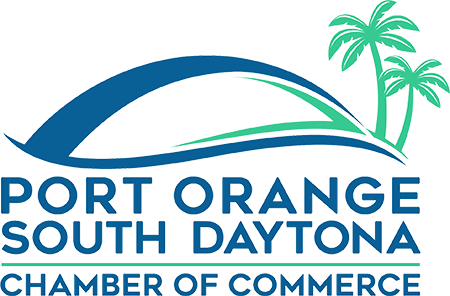Loan Basics for Entrepreneurs: Avoiding Pitfalls and Making Smart Choices
Borrowing money can be a lifeline for small businesses in transition — whether you’re hiring staff, expanding locations, or covering seasonal gaps in cash flow. But taking on debt also carries risks if owners don’t fully understand the financing options and the fine print that comes with them.
This guide breaks down key things every small business owner should consider before signing on the dotted line.
1. Financing Options to Explore
Not all business loans are created equal. Here are common ways small businesses access funding:
-
Traditional bank loans – Often lower interest rates, but require strong credit and collateral.
-
SBA-backed loans – Supported by the U.S. Small Business Administration, these offer favorable terms but involve detailed applications.
-
Business lines of credit – Flexible borrowing for fluctuating expenses; interest accrues only on what you use.
-
Equipment financing – The equipment itself acts as collateral, which can make approval easier.
-
Invoice factoring – A lender advances cash against your receivables; helpful for businesses with slow-paying clients.
-
Online lenders – Platforms like Bluevine offer speed, but terms can be costlier.
2. Key Loan Terms to Understand
Before agreeing to financing, small businesses should carefully review and clarify these loan elements:
-
Interest rate (fixed vs. variable) – Impacts predictability of payments.
-
Annual Percentage Rate (APR) – True cost of borrowing, including fees.
-
Amortization schedule – Outlines how payments reduce principal vs. interest.
-
Collateral requirements – Assets you risk losing if you default.
-
Prepayment penalties – Fees for paying off a loan early.
-
Balloon payments – Large lump-sum due at loan maturity.
A loan agreement isn’t just paperwork — it defines repayment terms, obligations, and legal protections for both sides. Reading it carefully helps avoid surprises later.
3. Why Reviewing the Fine Print Matters
Many business owners focus on the headline loan amount and interest rate but skim the actual contract. That can lead to problems down the road.
Loan agreements spell out repayment schedules, interest calculation methods, collateral conditions, and default consequences. Overlooking these details could mean hidden fees, personal liability, or stricter restrictions than expected.
By fully understanding the loan agreement, business owners can negotiate more confidently, anticipate obligations, and protect their financial stability.
4. Common Risks to Avoid
Borrowing comes with pitfalls if you’re not cautious.
Watch for these red flags:
-
Overborrowing beyond your ability to repay.
-
Accepting a high variable rate without considering potential increases.
-
Using personal credit or assets as collateral without a fallback plan.
-
Failing to stress-test cash flow against loan obligations.
-
Ignoring covenant clauses that restrict future decisions (like taking on more debt).
For a deeper dive, check resources like Investopedia’s guide.
5. Quick Comparison: Financing Options
Here’s a table showing key differences:
|
Financing Type |
Pros |
Cons |
Best For |
|
Bank Loan |
Low rates, longer terms |
Slow approval, strict requirements |
Established businesses with assets |
|
SBA Loan |
Government backing, lower rates |
Lengthy paperwork |
Growing companies needing support |
|
Line of Credit |
Flexible, pay interest only on use |
May carry higher fees |
Seasonal or unpredictable expenses |
|
Equipment Financing |
Asset-backed, easier to qualify |
Limited to equipment purchases |
Manufacturers, restaurants, contractors |
|
Invoice Factoring |
Immediate cash flow |
High fees, reliance on receivables |
Service-based firms with client delays |
|
Online Lenders |
Fast approval, less paperwork |
Higher costs, shorter terms |
Startups or businesses needing quick cash |
6. Steps to Borrow Smart
Here’s a practical checklist before committing:
-
Assess needs clearly – Borrow only what you realistically require.
-
Compare multiple offers – Use platforms like Lendio to explore options.
-
Check total repayment cost – Don’t just look at monthly payments; calculate total interest.
-
Review the agreement carefully – Highlight repayment clauses, penalties, and collateral sections.
-
Stress-test repayment – Model how your business handles payments during a downturn.
-
Seek advice – Consult with your local Chamber of Commerce or a financial advisor for guidance.
7. FAQ
How much debt is too much for a small business?
A common rule is keeping debt service below 25–30% of monthly cash flow.
Are online loans safe?
Many are legitimate, but compare APRs carefully and avoid lenders who don’t provide transparent terms.
What’s the difference between secured and unsecured loans?
Secured loans require collateral (like property or equipment), while unsecured loans rely solely on creditworthiness.
Should I use a business credit card instead of a loan?
Cards may work for small, short-term expenses but usually carry higher interest rates than structured loans.
Can I renegotiate terms after signing?
Sometimes, especially if you’ve maintained a good payment history. Contact your lender early if challenges arise.
Conclusion
Borrowing can fuel growth or cover urgent gaps, but only if approached thoughtfully. By comparing options, understanding loan terms, and scrutinizing the fine print, small business owners can secure funding without putting long-term stability at risk.
Discover the vibrant community of Port Orange, South Daytona, and Daytona Beach Shores by visiting the Port Orange South Daytona Chamber of Commerce and exploring the best in shopping, dining, and local events!

